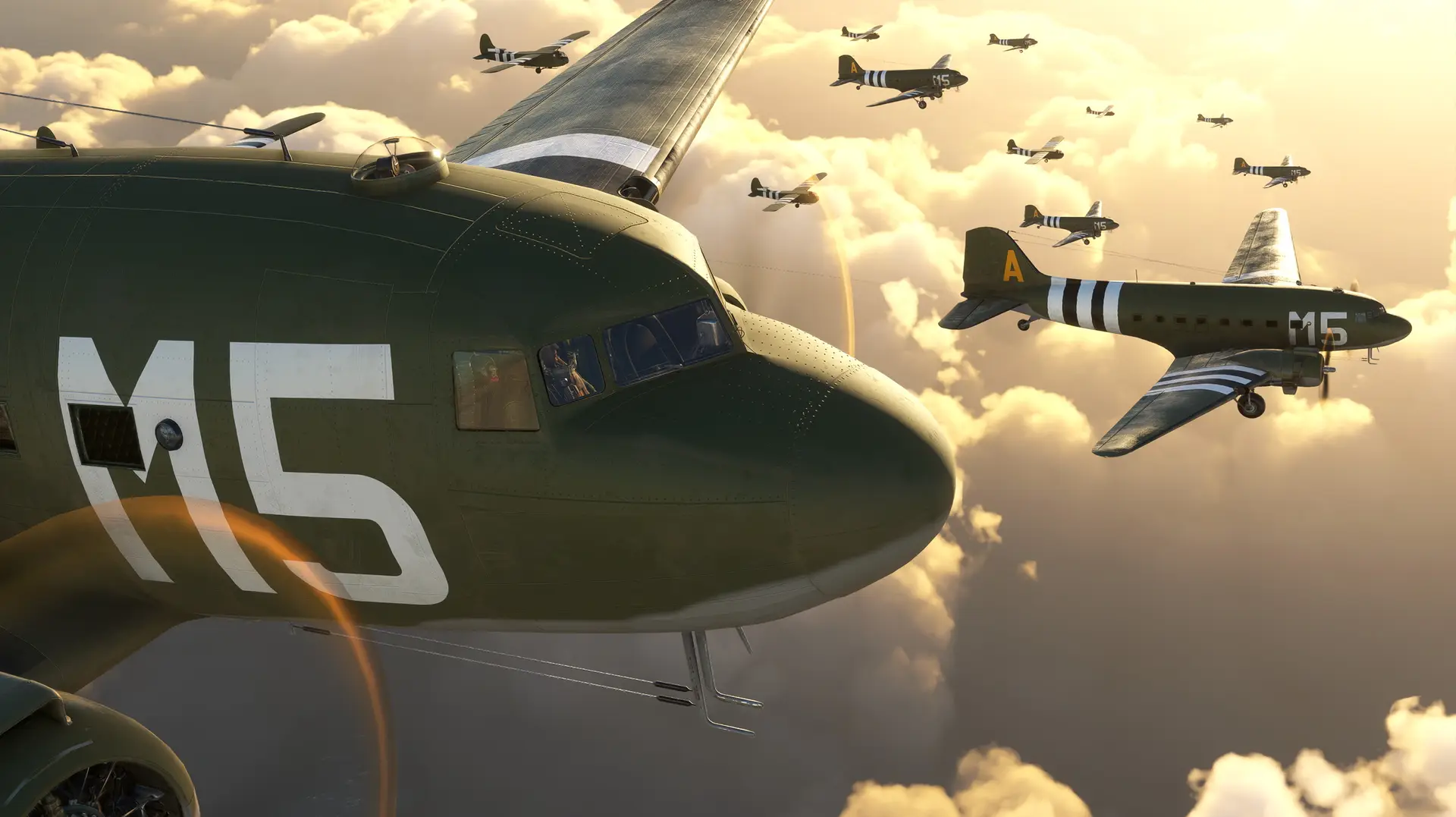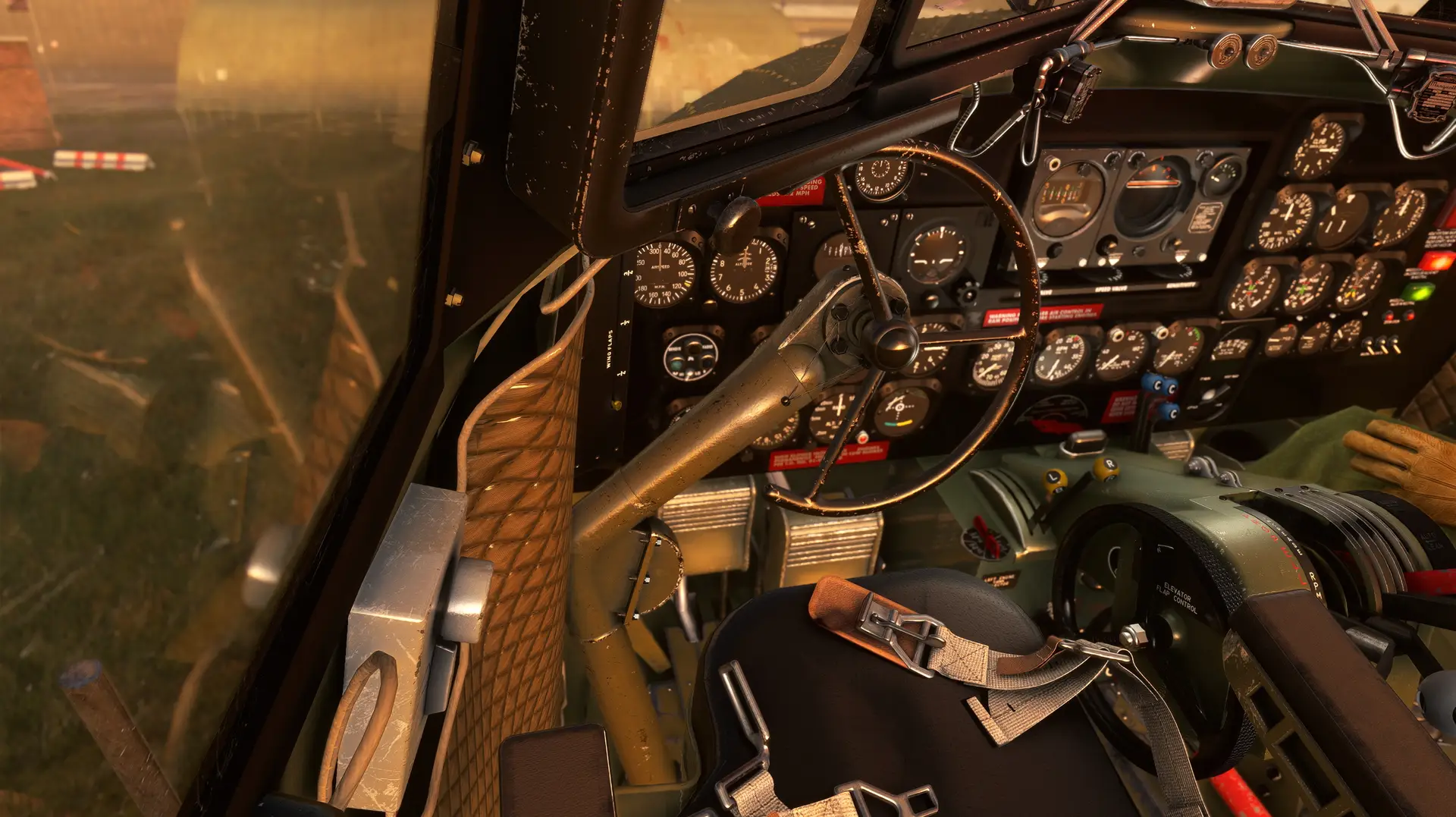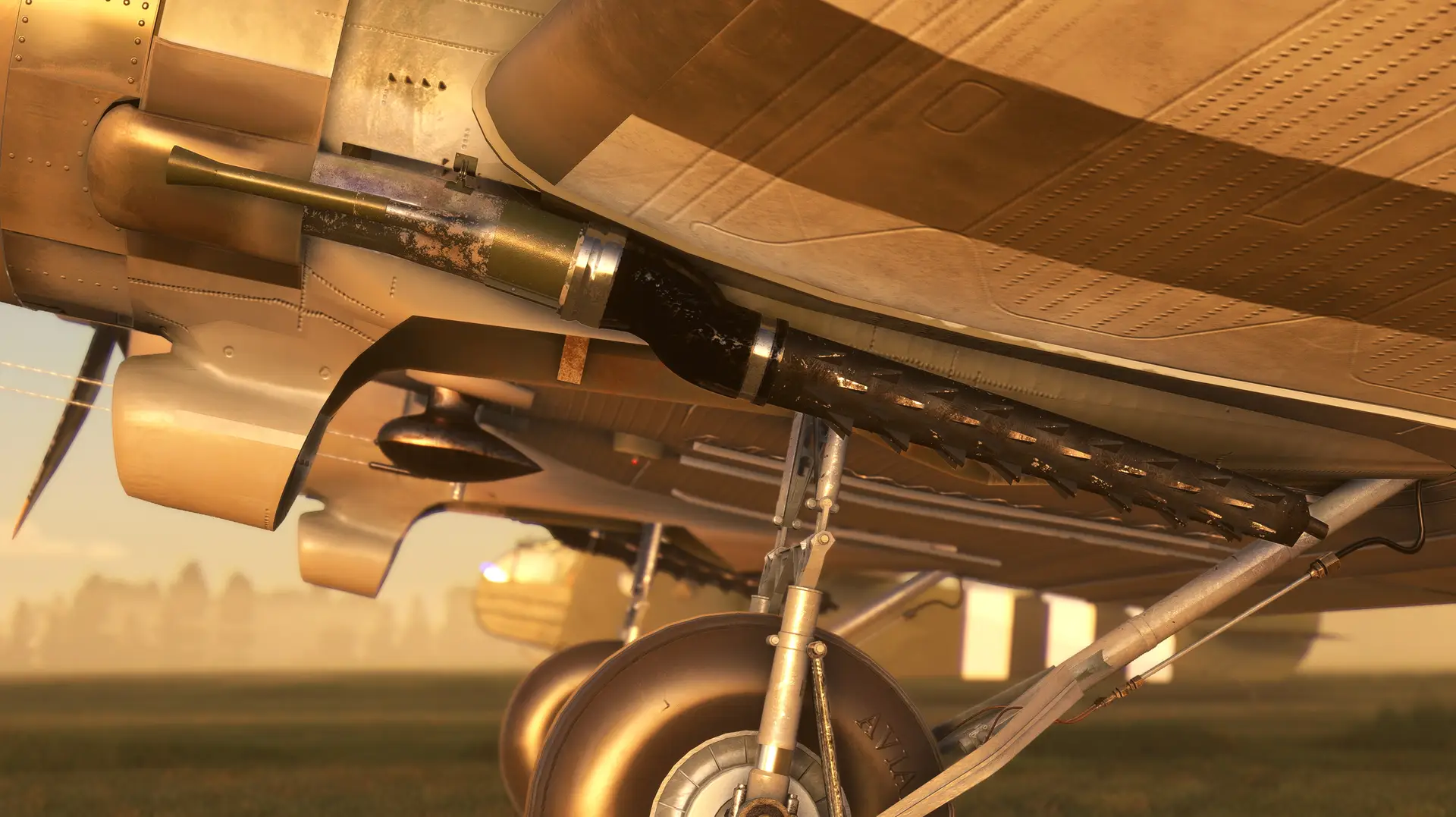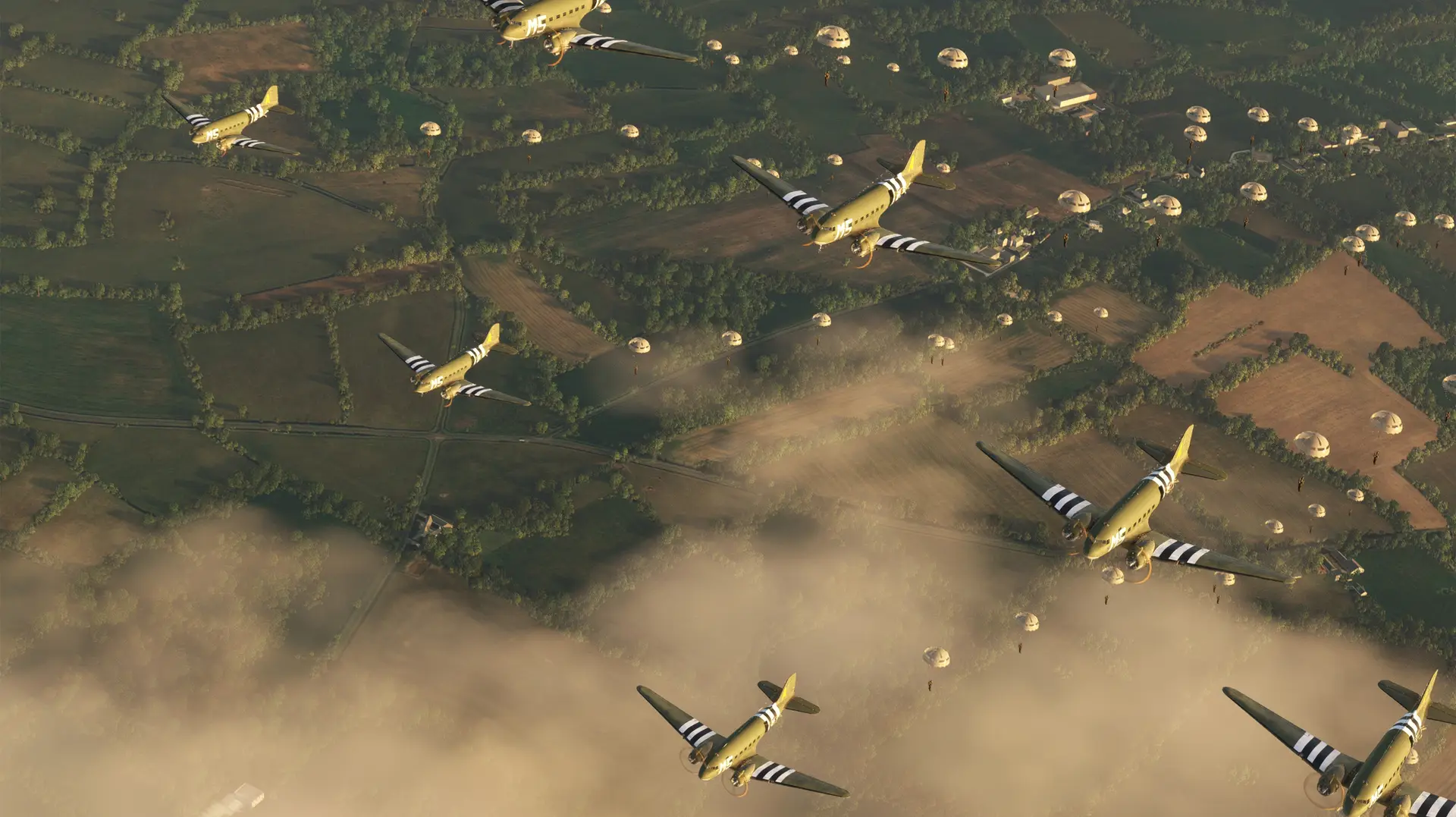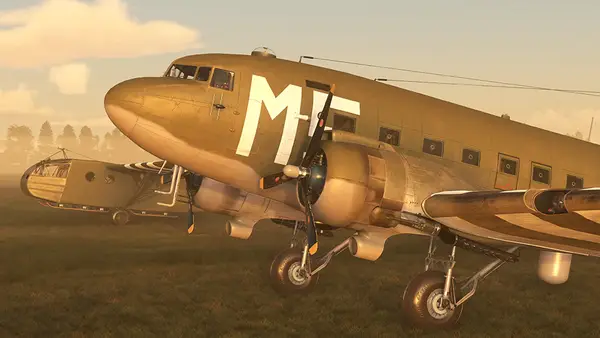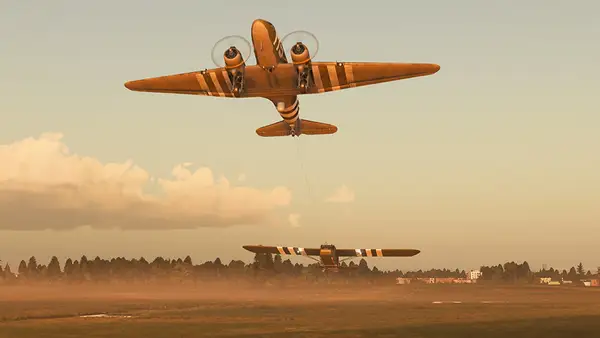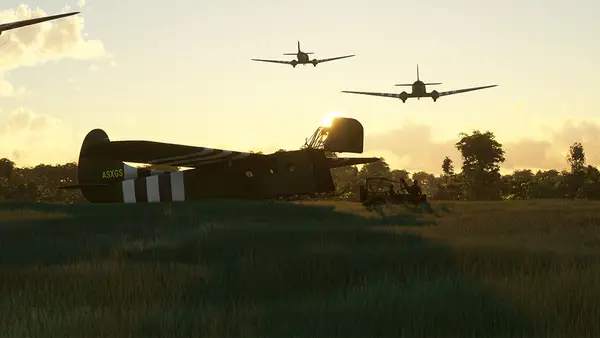The Famous Flyer 9 set celebrates the Waco CG-4A cargo glider and the Douglas C-47D transport airplane. Together, these two American aircraft played crucial roles for the Allies during World War II, notably during Operation Overlord, the invasion of Normandy on June 6, 1944, D-Day. The CG-4A was developed to carry troops, weapons, and all types of materiel. The C-47, renowned as one of the greatest cargo workhorses of all time, acted as a tug for the CG-4A. The C-47 could tow the CG-4A starting from the ground, or it could perform a “glider snatch pick-up,” snaring the glider’s tow line while flying just above ground level.
Military planners carefully integrated glider operations with other forms of combat elements. During D-Day, and during other World War II military operations, gliders carried artillery and other heavy weapon systems. These weapons, landed at precise locations and times, proved critical in enabling Allied victory. The CG-4A – C-47 “team” was one of the most important Allied transport systems during World War II.
The Waco CG-4A:
The CG-4A, developed by American aviation firm Waco Aircraft Company, took its maiden flight in May of 1942 and was introduced into combat service in July of 1943. The CG-4A (CG stands for “Cargo Glider,” although it was often referenced as a “Combat Glider”) played critical roles in several battles. It was notably used at the opening of Operation Overlord, the 1944 Allied invasion of Normandy, France. Nearly 14,000 CG-4A gliders were manufactured by over a dozen companies during the Second World War, including by the Ford Motor Company, the Waco Aircraft Company, and the Cessna Aircraft Company.
The use of gliders for combat purposes was a concept first introduced by the German military early in World War II. On May 10, 1940, eleven German assault gliders were towed to an altitude of 8,500 feet by transports for a type of raid never before conducted. They detached from their tethers and flew silently for twenty miles, landing at precise locations just outside a key Belgian fort held by the Allies. The heavily defended fort was considered impregnable. The 78 troops onboard the gliders took control of the compound within just twenty minutes. The success was due almost entirely to gliders enabling the swift, surprise, and precise tactical positioning of troops.
The American military took notice of the novel concept and the stunning success it engendered. General Hap Arnold, the commander of the United States Army Air Forces, established a fresh command dedicated to creating and operating combat gliders in February of 1941. Industry participants submitted several designs, with the Waco CG-4A standing above all others in capability.
The high-wing monoplane design comprised a welded steel fuselage frame covered in canvas. Its wings, tail, and control surfaces were built of wood frames covered in fabric, and the glider’s floor was built of honeycombed plywood that could withstand harsh loads and rigorous landings. During its operational tenure, the CG-4A was towed primarily by the C-47 Skytrain. It had a maximum speed of 150 miles per hour, but it typically “cruised” (towed behind the tug craft) between 110 and 130 mph.
Its nose, which held the cockpit, could swing upward for quick loading and unloading of the main cargo area. Crewed by two, the CG-4A could carry up to 15 passengers with combat loads, although it typically carried a maximum of 13. With a cargo capacity of just over 4,000 pounds, it could also carry: a 75mm howitzer, 25 rounds of ammunition, and two artillerymen; a jeep with driver and an assortment of personnel and cargo; a small bulldozer with operator; and several other loads and combinations.
The CG-4A measured 48 feet, 8 inches in length, stood 15 feet, 4 inches tall, and had a wingspan of 83 feet, 8 inches. Primary controls consisted of a wheel for pitch and roll inputs, and rudder pedals for yaw control. Its instruments included an airspeed indicator, an altimeter, a variometer, a compass, and a turn-and-bank indicator.
During the war, CG-4A gliders were towed with a 350-foot-long rope. After releasing the tow line from the C-47, the CG-4A pilot needed to navigate to a landing zone, keeping the aircraft above its stall speed of 49 miles per hour. The CG-4A could land in just 200 yards, granted it touched down at its ideal landing speed of 60 miles per hour. Landings often proved rough, with U.S. Army General William Westmoreland noting that World War II combat gliders were the “only aircraft built to crash.” Once on the ground, the pilots helped unload the glider’s personnel and contents, and then grabbed their weapons and joined the troops they carried into combat.
The Douglas C-47D Skytrain:
The C-47D Skytrain is a low-wing, twin-engine, piston-powered military transport airplane built by the Douglas Aircraft Company of the United States.
The Skytrain, which took its maiden flight on December 23, 1941, was based on the company’s successful DC-3 airliner, which was developed and entered service in the 1930s. The Skytrain proved to be one of the most important aircraft for the Allies during World War II. One of its most important roles was as a tug aircraft for Waco CG-4A cargo gliders. In the late 1930s, the United States Army Air Forces sought a transport aircraft that was more capacious, faster, and had a longer range than the military variants of the Douglas DC-2, the C-32, the C-33, and the C-34.
In 1941, the command chose the DC-3 (developed from the DC-2) as the basis for their new primary transport aircraft, designating it the C-47 Skytrain. The all-metal DC-3 (Douglas Commercial 3), introduced as an airliner in 1936, proved efficient, reliable, fast, and was renowned for having great range. The DC-3 required only a few modifications for the Army’s needs.
These changes included the addition of a large cargo door, a strengthened floor in the fuselage, and glider tow hooks on its tail section that would be used for towing the Waco CG-4A. The C-47 was crewed by three or four, depending on mission requirements, and could carry up to 28 fully equipped troops, 6,000 pounds of cargo, or some combination.
A total of 10,000 Skytrains were produced by the end of World War II. The airframe served several roles other than glider towing, including general transport, paratroop delivery, medical evacuation, gunship, and reconnaissance. All branches of the U.S. military used the Skytrain during World War II, as did every major Allied power. The British and Australians called it the Dakota (Douglas Aircraft Company Transport Aircraft). The C-47 proved vital for the Allied victory.
It operated in every major battle of the war, ensuring personnel, weapons, food, fuel, and other materiel arrived at the right places at the right times. This included delivering thousands of paratroops during the Battle of Normandy and flying the infamous “hump” over the Himalaya mountains from India to China, one of the most demanding, and dangerous, airlift missions in history. Post-World War II, the Skytrain played critical roles in the Berlin Air Lift, the Korean War, and the Vietnam War. Many, converted for civil use, continue to operate today around the world. Over 100 countries have used the C-47. The C-47 measures 63 feet, 9 inches in length, has a wingspan of 95 feet, 6 inches, and stands 17 feet tall.
It features a swept main wing, a standard tail unit, and a retractable traditional undercarriage. It is powered by two wing-mounted 14-cylinder Pratt & Whitney R-1830-90C Twin Wasp radial engines that each produce up to 1,200 horsepower and turn 3-blade, constant-speed propellers. It has a maximum range of 3,800 miles, a normal range of 1,600 miles, climbs at 1,000 feet per minute, and has a service ceiling of 26,400 feet above sea level. The C-47 cruises at 160 miles per hour and has a maximum speed of 224 mph.
